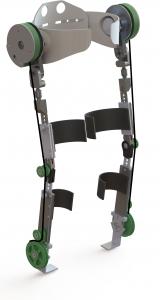Teaching Children with Cerebral Palsy to Walk: UW Exoskeleton Project Wins $30,000 to Develop New Technology
Imagine a therapeutic device that children with cerebral palsy could wear at home to strengthen their legs and increase their mobility, eventually allowing them to walk without assistance. Now imagine the device was low-tech and affordable, making it accessible to children around the globe who have limited or no access to expensive therapies that require robotics, supervision by a trained clinician, or invasive surgeries.
